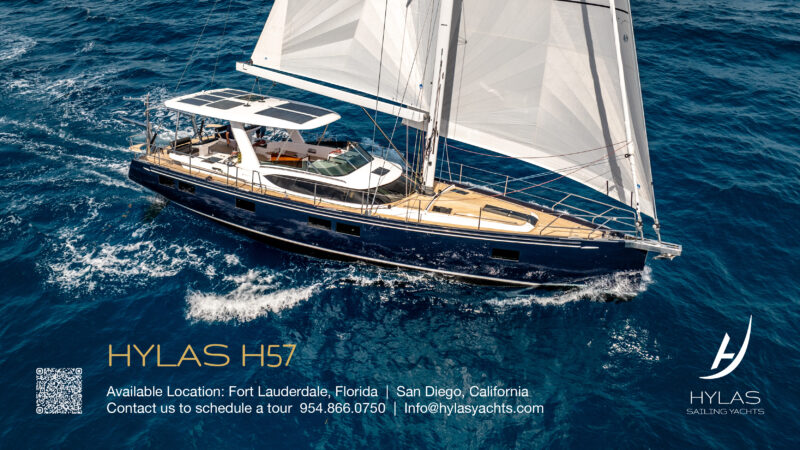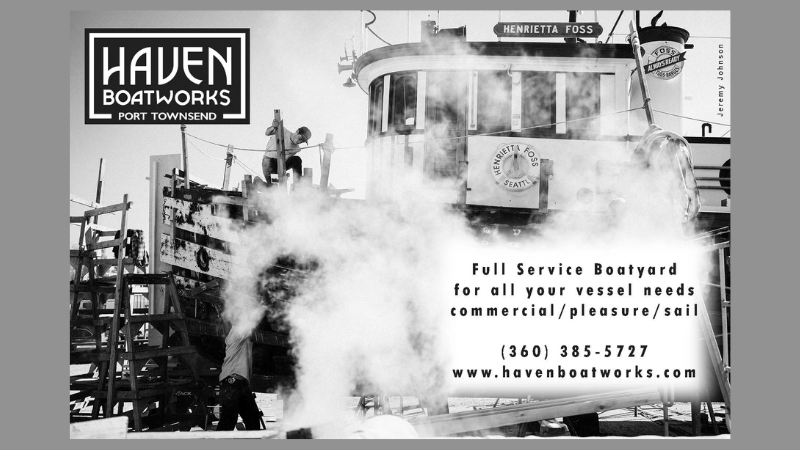
It Was a Sushi Slide South With the 30th Annual Baja Ha-Ha
It’s a wrap. The 30th annual Baja Ha-Ha started on a brilliant, sunny Monday and pretty much took that weather all the way south to Cabo. The breeze was light; the sailing, fishing, surfing and harbor gatherings were all good. There were challenges such as overland travel from the remote Bahia Santa Maria to get all 360 passports stamped, but it miraculously worked out.
There’s much more to tell, but we thought we’d share a glimpse, starting with the menu from the always-excellent fishing. There was fine dining from the bounty of the sea all the way to Cabo.
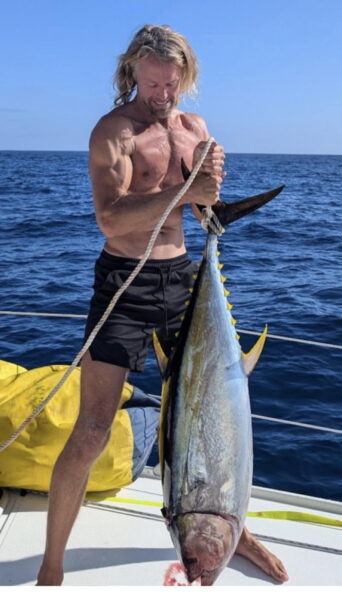
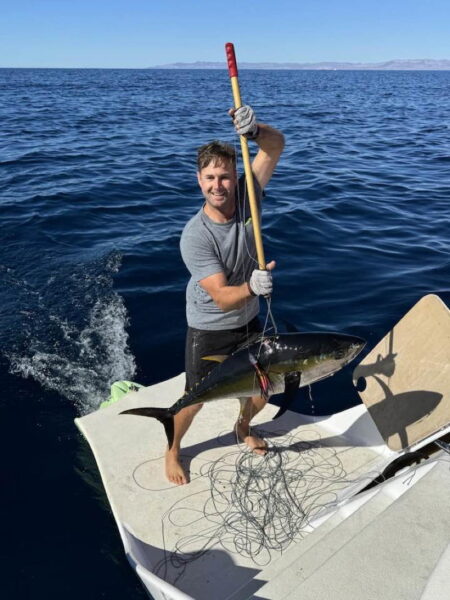
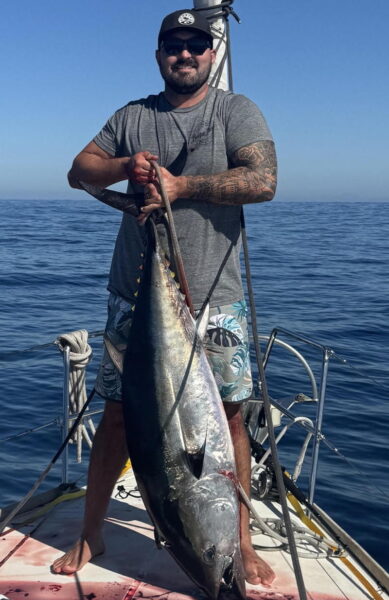
Beyond the fishing, the sailing, sunrises and sunsets were spectacular, while the night watches benefited from clear skies and a waxing moon. (It’s a supermoon tonight, with King Tides this morning and throughout this weekend.)
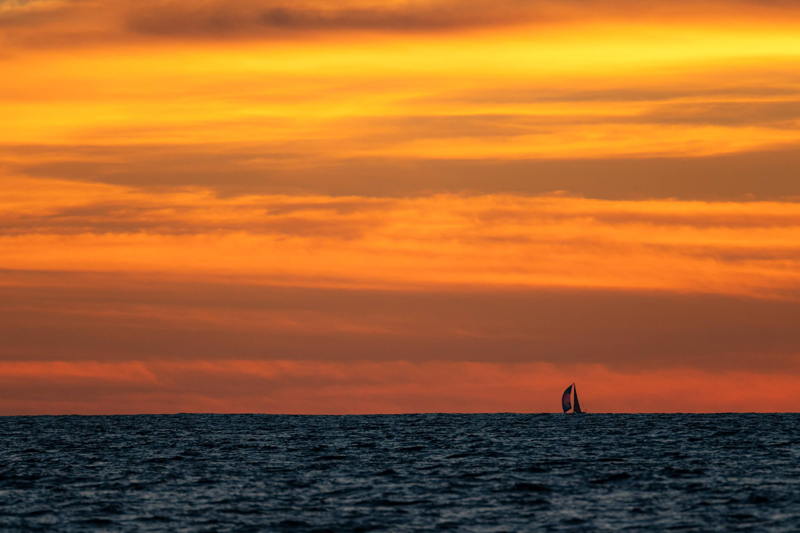
There was some gear failure, a broken wrist, and some awesome dancing on the bluff at Bahia Santa Maria. As the image below shows, the wind offshore was light, putting a premium on big, downwind sails, patient sail handling, and/or the iron genny. As the three fishing photos show, the seas were often flat, but there was enough breeze to keep spinnakers drawing and boats moving.
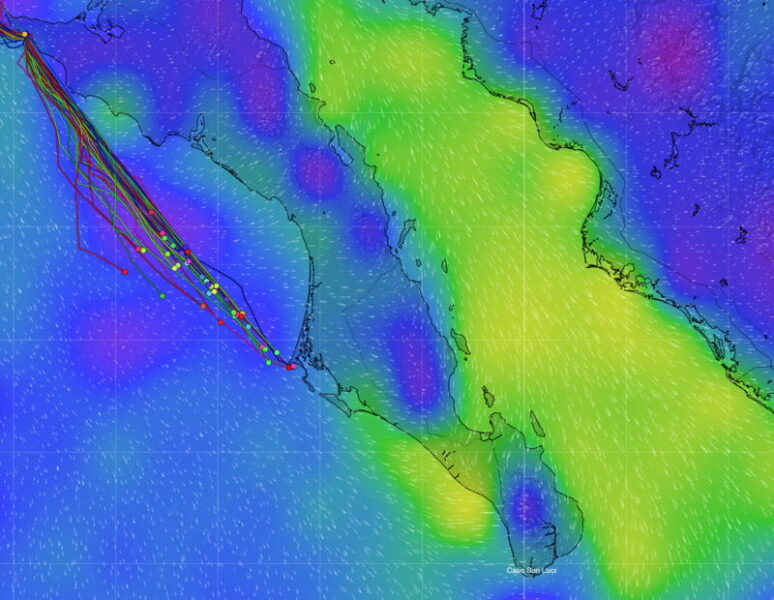
Talented Latitude 38 sales manager Nicki Bennett also put together some episodes of Latitude 38 Live, where we followed the Baja Ha-Ha fleet south with Chuck Skewes of Ullman Sails aboard the Grand Poobah’s Surfin’ 63 Profligate. You can see the final episode below and all prior episodes on our YouTube channel here.
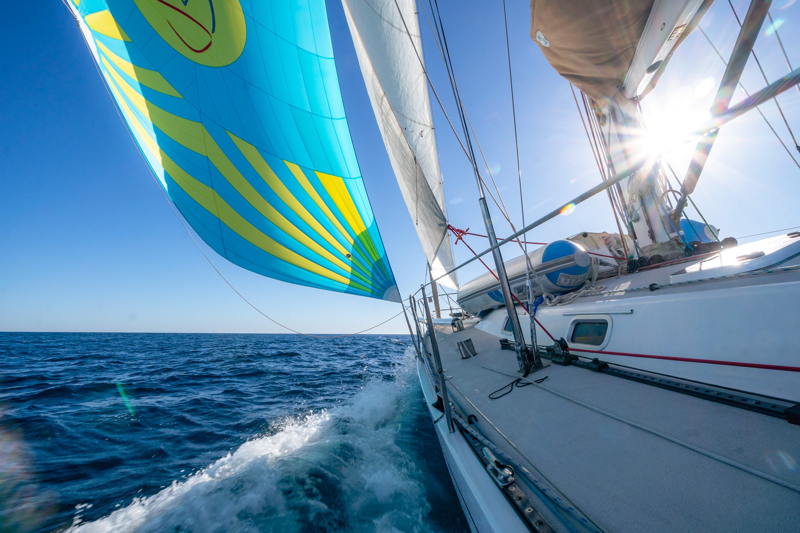
As expected, upon arrival in Cabo there were no slips available for anyone, and all had to anchor outside the marinas. With “peak congestion” in and around the harbor, it was decided to forego the closing ceremonies and let boats continue on to more welcoming cruising grounds. From the fleet-tracker image below you can see boats quickly moved to Puerto Los Cabos or on to La Paz for the La Paz Beach Party, happening on November 24.
If you’re thinking of heading south you can order your own First Timer’s Guide to Mexico here.
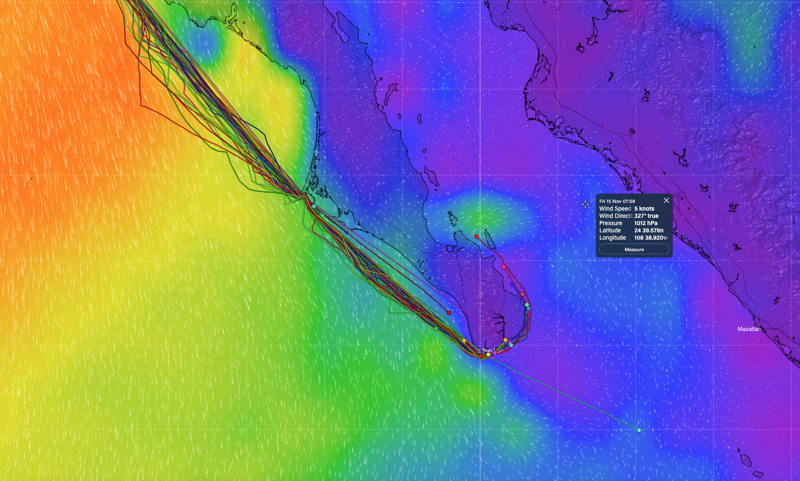
The sailing and stories continue. We’ll have more on the 30th annual Baja Ha-Ha in the upcoming December issue, which will hit the streets on Tuesday, December 2.
- General Sailing
- Current News
- Maritime History
- Environmental News
- Safety
- West Coast Sailing
- Working Waterfront
Anchor-Outs’ Last Days In Richardson Bay
Local sailor and friend of Latitude John “Woody” Skoriak happened to be in Sausalito and bumped into Dave Gissendaner (Diver Dave) of Dave’s Diving Services. Woody tells us Dave’s divers and the crew from Parker Diving Service have been removing, and towing to a temporary anchorage, the last of Richardson Bay’s anchor-out boats. Below, Woody shares an update of the situation.
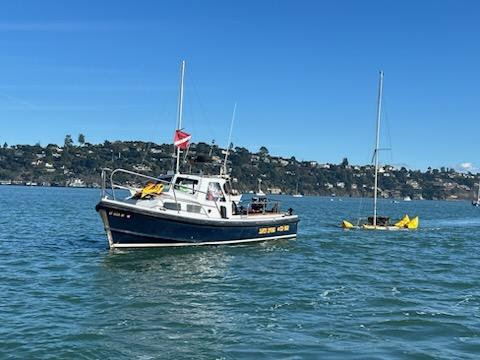
Sausalito boaters may have noticed a lot of activity in the Richardson Bay Anchorage. Local diving and salvage operations like Dave’s Diving Services and Parker Diving Service have been clearing out sunken boats, and towing away abandoned and unsafe craft to the US Army Corps of Engineers. Diver Dave Gissendaner said the demolition crews have been so busy, the situation was “take a number and get in line.”
The goal is to clear the anchorage of unsafe and unsanitary vessels and return it to the status that Richardson Bay has always had, but that was never enforced — a Special Federal Anchorage where vessels can anchor only 72 hours maximum. Richardson Bay was declared a Special Federal Anchorage in 1969. This enforcement will help clean Richardson Bay of unsafe (and often unregistered) craft, and at the same time protect the Bay’s eelgrass, which local ecosystems depend on.
The Richardson Bay Regional Authority (RBRA) has placed new buoys marking the Special Anchorage and will move the few dozen boats left to an alternate anchorage outside Richardson Bay. According to Gissendaner, this is meant to be just a “holding pen” until the owners of the boats can also be relocated to shoreside housing.
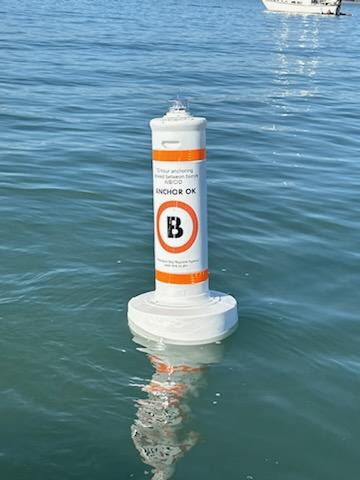
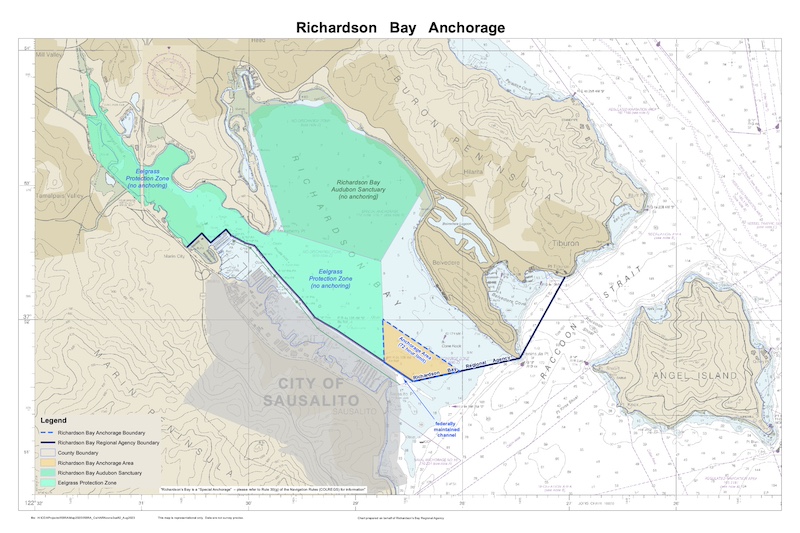
All the local city, county, state and federal agencies are working to make this happen, and the target date is October 2026. But in the meantime, Gissendaner says that all agencies and authorities intend to regulate and enforce the Special Federal Anchorage. That’s news that most boat owners, marinas and maritime enterprises in Sausalito and around the Bay will undoubtedly welcome. ”
The Hylas H57 Now Available in San Diego
Maritime Museum of San Diego Celebrates ‘Star of India’s 161st Birthday
The Maritime Museum of San Diego is inviting museum members, volunteers and the public to celebrate the legendary Star of India’s 161st birthday. The celebrations will run from Thursday, November 14, through Sunday, November 17. Last year Star of India celebrated her 160th birthday with a sail on November 11 and 12 — it was her first sail in five years. According to Maritime Museum of San Diego president/CEO Raymond Ashley, Ph.D., K.C.L., “We want this year’s dockside celebration to be a welcoming invitation to the community to learn more about her complex and impressive maritime history.”
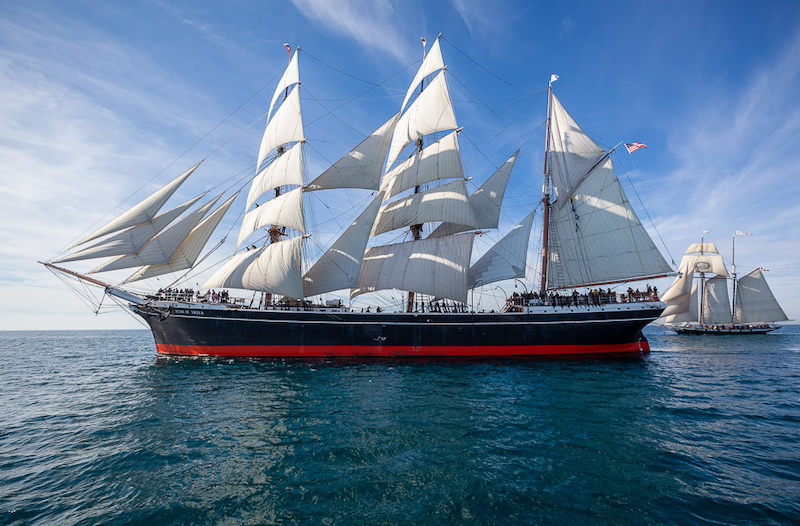
While the party started on Thursday, there’s still a weekend’s worth of entertainment available, incuding the music of Many Strings, a San Diego-rooted duo performing a treasure chest of maritime- and history-blended vocals, from 12:00 p.m. to 2:00 p.m. on Friday and Saturday. Star of India’s birthday celebration culminates on Sunday, November 17, when museum volunteers serve up complimentary birthday cake and beverages starting at 12:00 noon, while supplies last.
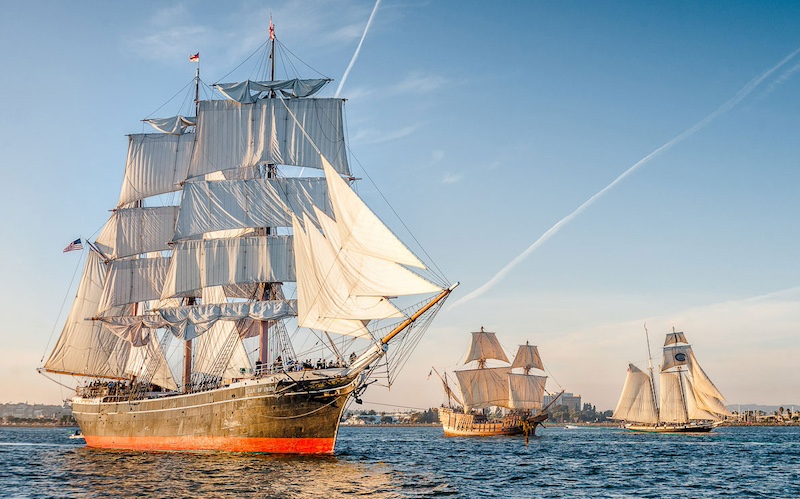
Built in 1863, Star of India is the world’s oldest active sailing ship and is also the oldest iron-hulled merchant ship still afloat. She was launched as the fully rigged ship Euterpe (named after the Greek goddess of music and lyric poetry) at Ramsey Shipyard on the Isle of Man in 1863. In 1871 she was purchased by the Shaw Savill Line of London, and for the next quarter century she transported hundreds of emigrants to New Zealand and Australia. During this period, she completed 21 circumnavigations.
Euterpe was eventually sold to the Alaska Packers’ Association. In 1901 her new owners changed her rig to that of a bark (her present configuration), and later changed her name to Star of India. By the time of her retirement in 1923 she had made 22 voyages from San Francisco to Alaska, returning each year with her hold laden with canned salmon.
In 1926, Star of India was sold to the Zoological Society of San Diego as the projected centerpiece for an aquarium and museum. The Great Depression and World War II saw these proposals languish from lack of funding. Eventually in the late 1950s and early 1960s, thanks to a groundswell of support from local San Diegans, Star of India was restored to sailing condition. In 1976, she set sail once again. Her preservation continues as a living reminder of the great Age of Sail, thanks to the tireless efforts of curators and volunteers at the Maritime Museum of San Diego.
If you’re on the fence about going to see this historic ship, perhaps these interesting facts will convince you. The Star of India was launched five days before Abraham Lincoln’s Gettysburg Address; sailed around the world 21 times; has never been fitted with auxiliary power; ran aground in Hawaii; was trapped in ice in Alaska; became an “American” ship by Act of Congress; and still sails the ocean, these days with a volunteer crew.
General admission tickets include entrance to all Maritime Museum of San Diego vessels and exhibits. Tickets are $24.00 for adults, $18.00 for seniors/military/students (13-17), and $15.00 for children 3–12. Ages 2 and under are free. Tickets can be purchased in advance online at sdmaritime.org or at the Maritime Museum of San Diego ticket booth located at Star of India Wharf, 1492 N. Harbor Drive (between Grape and Ash streets) next to Portside Pier), San Diego. The museum is open daily 10:00 a.m. to 5:00 p.m. Last guest entry at 4:00 p.m.
Star of India relies on Maritime Museum of San Diego volunteers and a committed staff for her upkeep. The 501(c)(3) nonprofit Maritime Museum of San Diego relies on donations and the support of members, volunteers, and visitors to sustain its waterfront collection of historic vessels and maritime exhibits.
*Editor’s note: While researching this story we came across an interesting anecdote in a 2002 edition of ‘Lectronic Latitude. It appears that Star of India has been wooing sailors for quite some time.
Discovering a Living Library in the South Pacific
The August issue’s Max Ebb about yacht club libraries rekindled a memory of an experience with a yachting library a long time ago.
In 1986, my wife Alison and I cruised through the South Pacific aboard our Ranger 33, Eleu. One of our stops was Suwarrow Atoll in the Cook Islands. I had read Tom Neale’s book, An Island to Oneself, about his 16 years of solitude there, in preparation for our visit. Tom had passed away nearly a decade earlier, and I looked forward to exploring his iconic island.
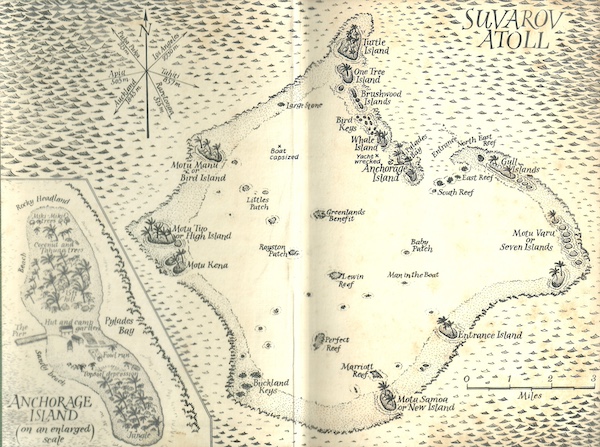
Our arrival at the atoll became a bit hectic when we hooked a large crevalle jack right in the middle of the entrance channel, but we got the fish safely aboard while dousing sails and avoiding coral heads. There were no other boats present and no sign of life on the motus that dotted the atoll’s fringing reef. We dropped the hook in the lee of Anchorage Island, the largest motu, got sails and running rigging put away, and I went to work cleaning that night’s dinner. After removing the filets, I tossed the carcass overboard. Five seconds after it hit the water, there was a tremendous commotion next to Eleu. We looked overboard to see a half-dozen 4-foot-long black-tip sharks fighting over the remains. These predators had apparently taken up residence under the boat as we anchored.
“I don’t think we’ll be doing a lot of snorkeling here,” I said to Alison.
We launched the dinghy and rowed ashore to the postcard-perfect white-sand beach shaded by overhanging coconut palms. Behind the middle of the beach, we found a stone-lined path leading toward the center of the half-mile-long, quarter-mile-wide, densely jungled motu. “That’s strange,” we noticed. “The path is clear of debris while everywhere else is covered with fallen coconut fronds.” Somebody else was either there or had been recently.
We walked cautiously up the path, and at a turn 50 yards in, came face to face with a life-sized concrete bust of a man with an inscription beneath it: “Tom Neale lived his dream on this island.” This was getting eerie.
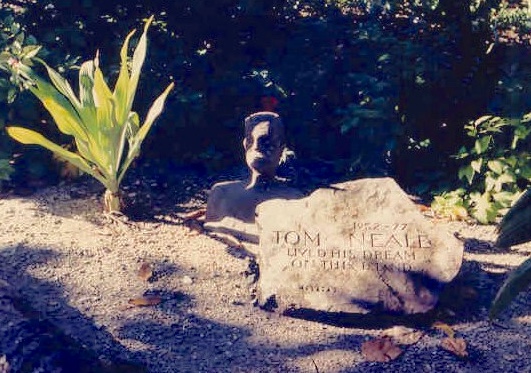
Another few yards up the path, we entered a large clearing and glimpsed a cat darting into the underbrush to the left, and a chicken squawking in alarm as it escaped the clearing to the right. In the middle of the clearing stood the house I recognized from Tom Neale’s book. It was well maintained.
“Somebody MUST be here!” I said.
The Magic of Bay Area Sailing
The seasons change but the magic of Bay Area sailing is available 12 months a year. Our friend Michelle Slade sent this shot taken by John Bonds yesterday as a few showers passed through and a lone sailboat traversed the Bay.
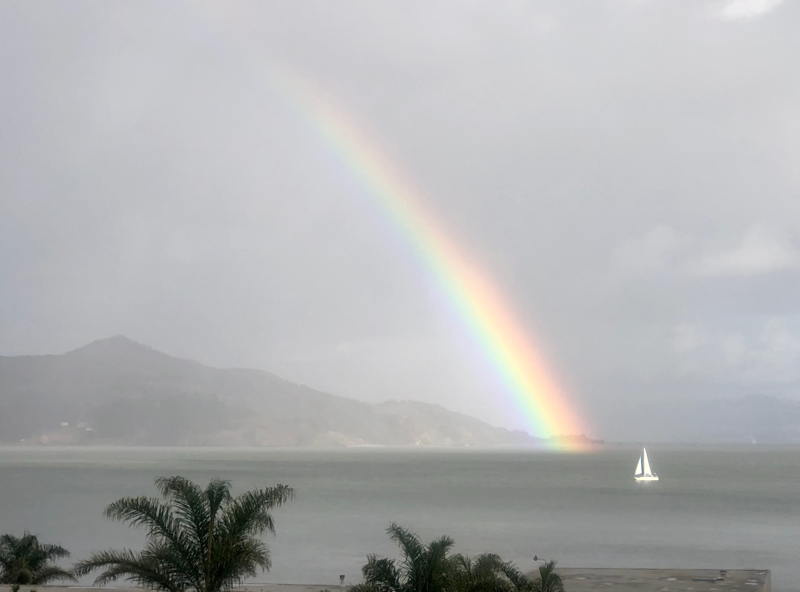
It looks like a cool but fine, sunny weekend for sailing. South Beach Yacht Club and Sequoia Yacht Club will be hosting their first midwinters of the season on Saturday. and the YRA is hosting its first Doublehanded Midwinters on Sunday. Additional races are listed in our calendar.
If you’re looking to sail your cares away this weekend, the Bay is near at hand.

